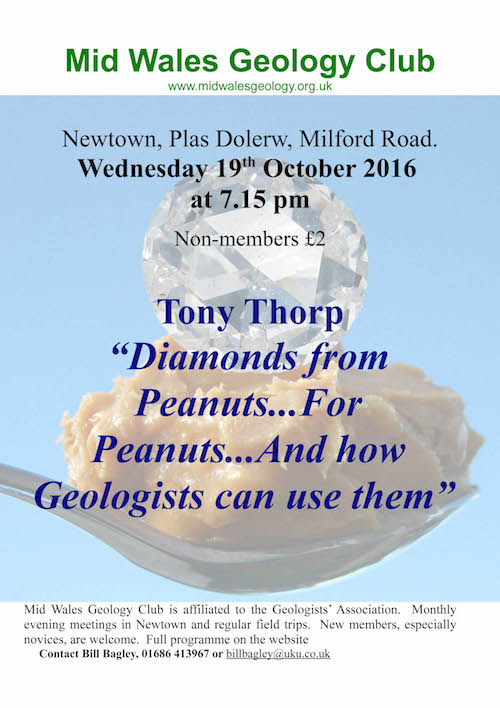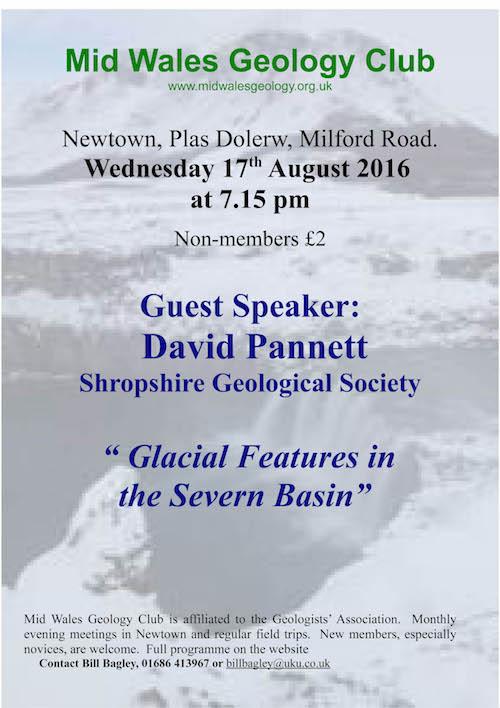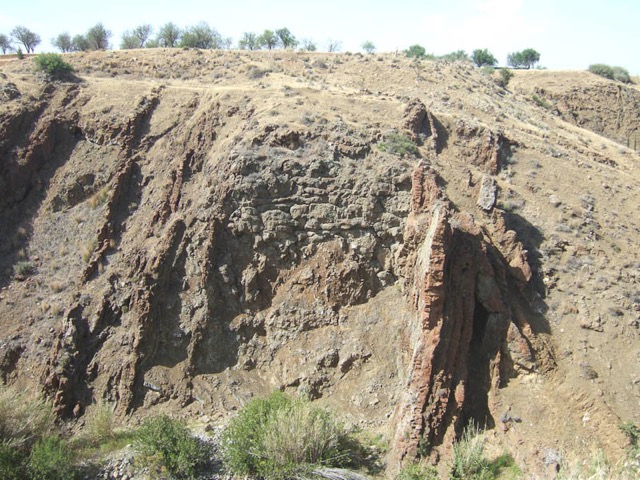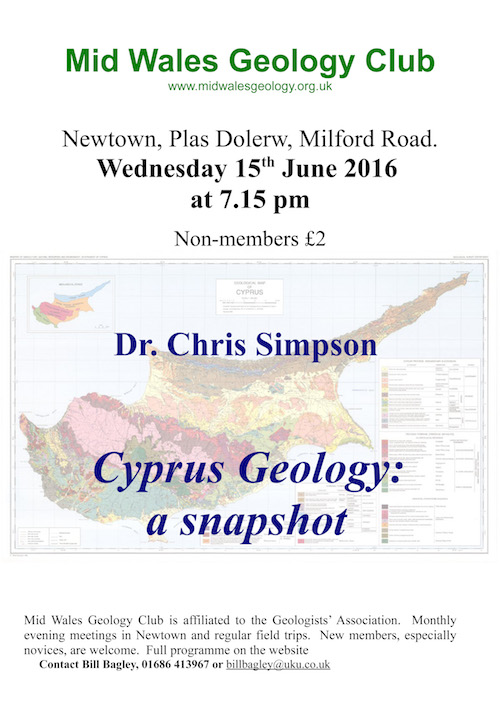Tuesday 11th October 2016
At the September meeting Dr Sara Metcalf gave a very interesting talk on Mesozoic mammals and mammalian evolution. Originally the finding of fossils of Mesozoic mammals and their immediate ancestors was fragmentary but since the 1990's many new fossils have been found, especially in China. The well-preserved fossils and the combined discipline of molecular phylogenetics have greatly enhanced the knowledge about mammalian evolution.
Using anatomical diagrams, cladograms and even a short YouTube video, Dr Metaclf took us through the evidence for evolution and the “family tree” of modern day mammals.
The next meeting will be on Wednesday 19th October when Tony Thorp will give a talk entitled “Diamonds from Peanuts...For Peanuts...And how Geologists can use them”

Thursday 15th September 2016
At the August meeting David Pannett ( Shropshire Geological Society) explained how many of the landscape features observed in the Severn Valley are the result of glaciation. He explained how glaciations have occurred a number of times in the past 2-2.5 million years. The last of these being the Devensian from about 120,000 to 11,000 years BP.
The ice from these glaciations have given rise to many features to be found in the landscape, including moraines, kettle holes, outwash basins and river terraces. The origin of these features was explained. He took us on a trip up the Nant-y-Llyn valley to Pistyll Rhaeadr explaining the stepped profile of the valley, the corries and the classic hanging valley that is Pistyll Rhaeadr.
The talk was interesting and informative.
The next meeting will be on 21st September when Dr. Sara Metcalf will give a talk entitled: Mesozoic Mammals.
Monday 15th August 2016
Our next event will be on Wednesday the 17th of August, where guest speaker David Pannett from the Shropshire Geological Society will present his talk “Glacial Features in the Severn Basin”

Sunday 31st July 2016

At the last meeting Dr. Chris Simpson presented a snapshot of the geology to be found on the island of Cyprus. The main focus of the talk was the Troodos Ophiolite. Ophiolite is a fragment of oceanic crust and the underlying upper mantle that has been uplifted and emplaced onto continental crust.
The Troodos ophiolite was created during the complex process of sea-floor spreading and formation of oceanic crust and was emerged and placed in its present position through complicated tectonic processes related to the collision of the Eurasian plate to the north and the African plate to the south.( Geological Survey department cyprus) It is seen as the most complete, intact and studied ophiolite in the world.
With many good photographs Dr Simpson worked his way up through the stratigraphic column of the ophiolite commencing with the ultramafic rocks like harzburgite composed of olivine and orthopyroxene. Harzburgite along with dunite are interpreted as a “mantle sequence”, which represents residue from partial melting of the upper mantle. The next sequence was the layered gabbro with massive gabbro above. The gabbro is a residual of magma. During the slow cooling, the heaviest minerals lie in the depths, thereby creating the darker coloured gabbro, with light-coloured varieties in the higher layers. At higher levels and in small pockets, the products of this different crystallisation are to be found, known as plagiogranites or granophyre.
Above this is a sheeted dyke complex. They are pathways through which molten basaltic magma rose from the mantle to the seafloor where it solidified as a pillow lava. Some of the magma did not reach to the surface and solidified as dykes, consisting of dolerite. Above these are the volcanic rocks consisting of pillow lavas and lava flows. Basalts predominate in the pillow lavas and are characterised by large spherical to ellipsoid pillows. Their crust is glassy due to the rapid cooling but the insides of the pillows is honeycombed due to sudden expansion of gases in the lava.
The geology along with the wonderful weather makes Cyprus a lovely and interesting place to visit.
The next meeting will be held on 17th August when David Pannett will give a talk entitled: “Galcial Features in the Severn Basin.”
Wednesday 8th June 2016
Our next event will be on Wednesday the 15th of June where guest speaker Dr. Chris Simpson will give his talk “Cyprus Geology: a snapshot”



